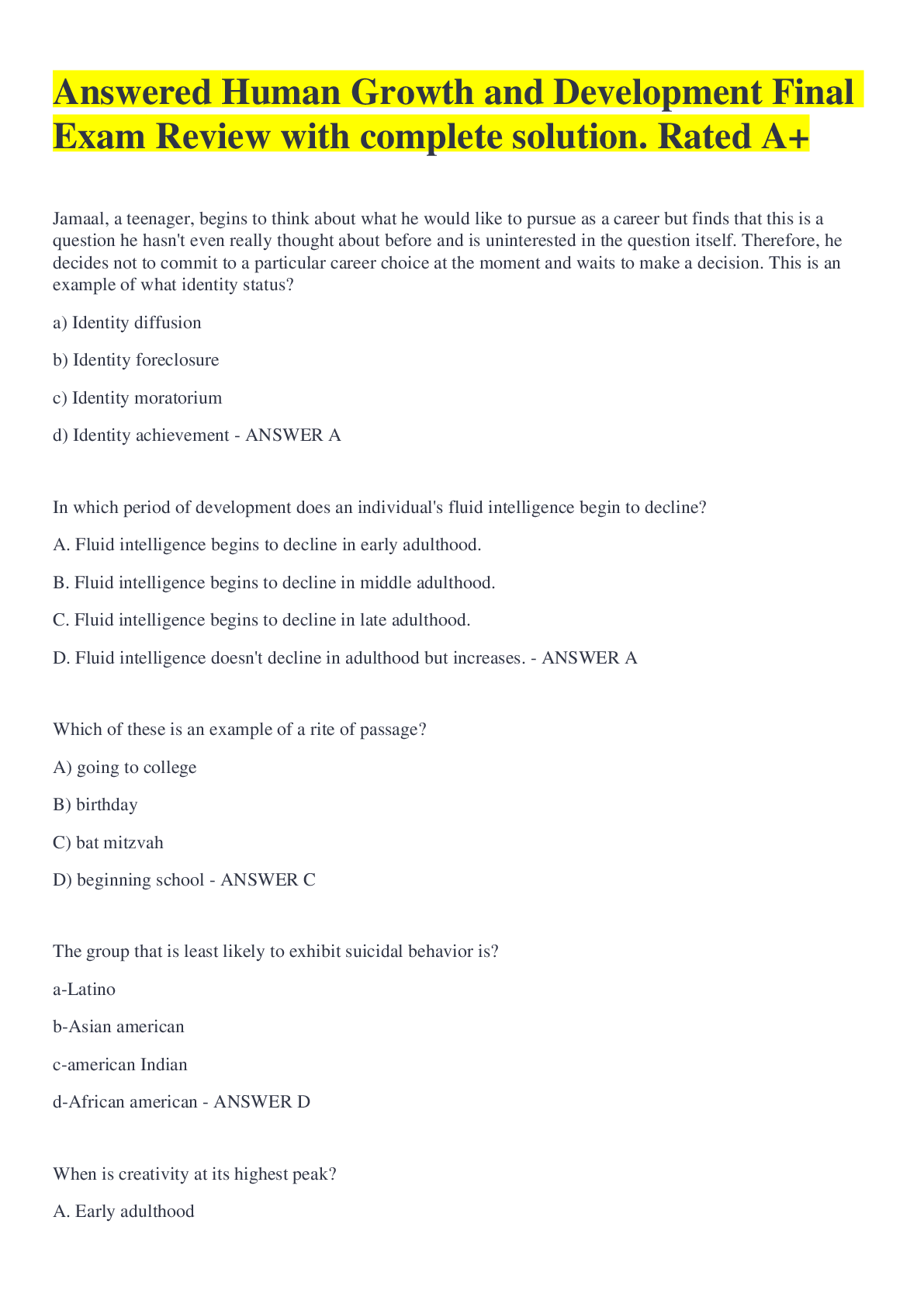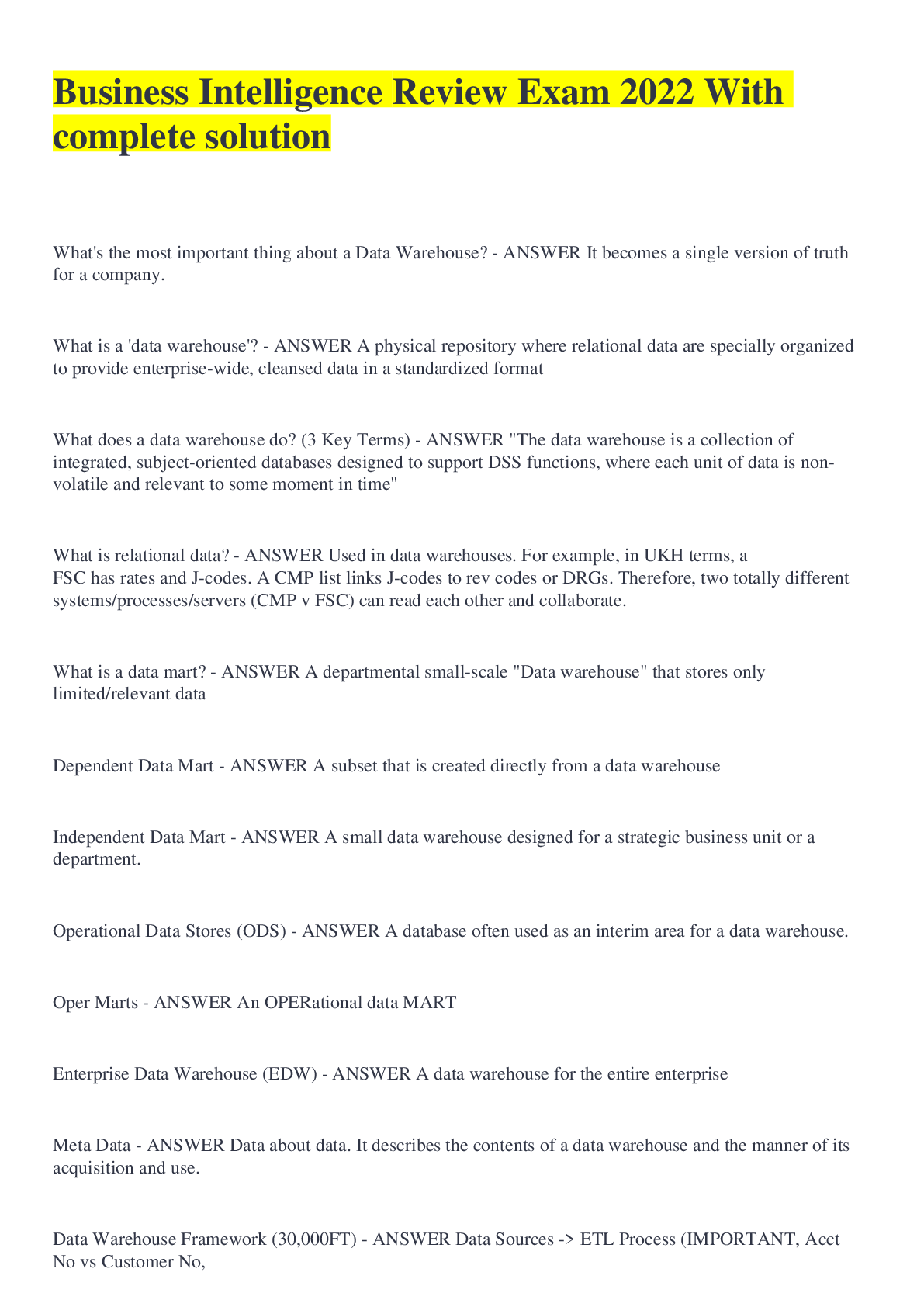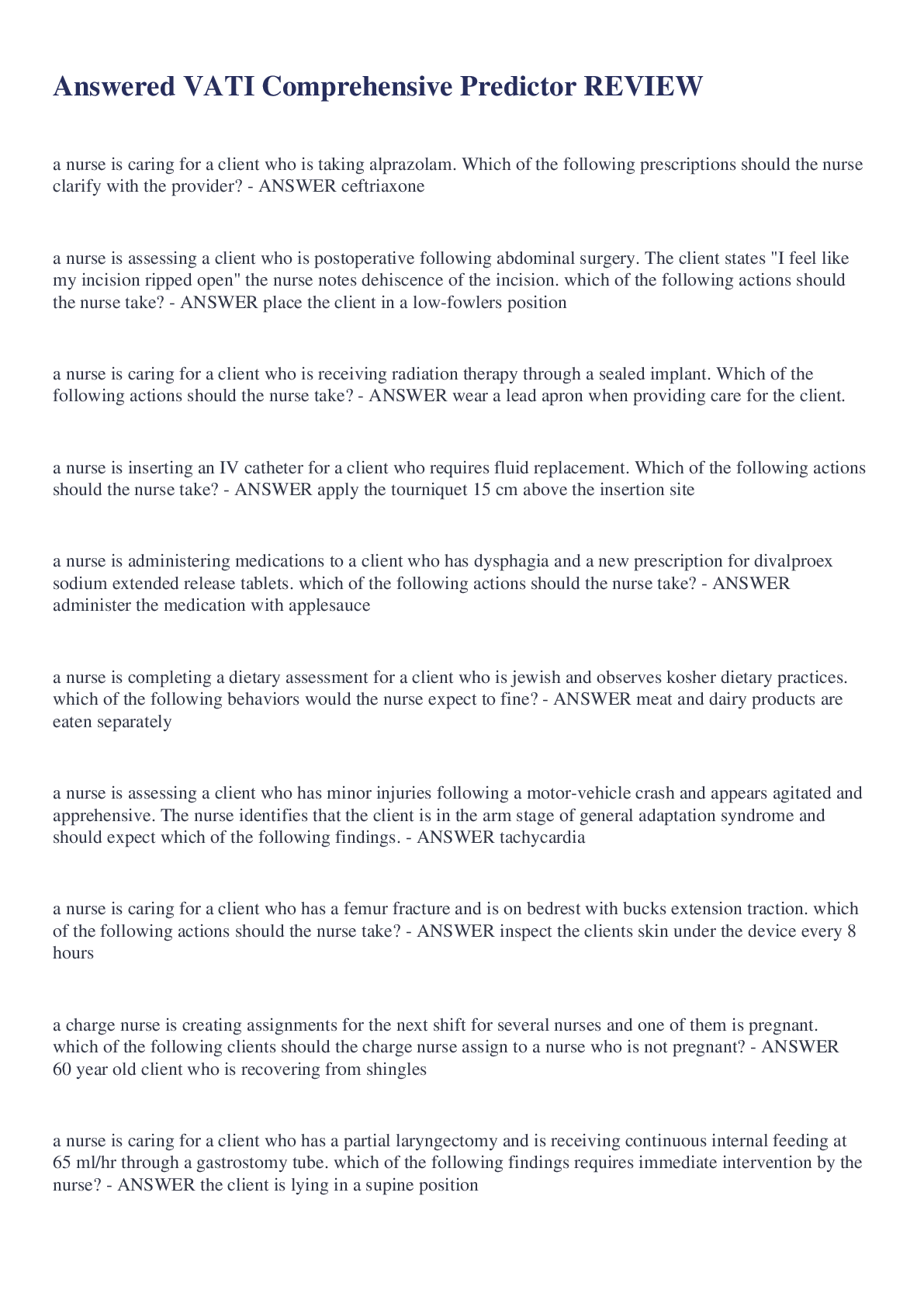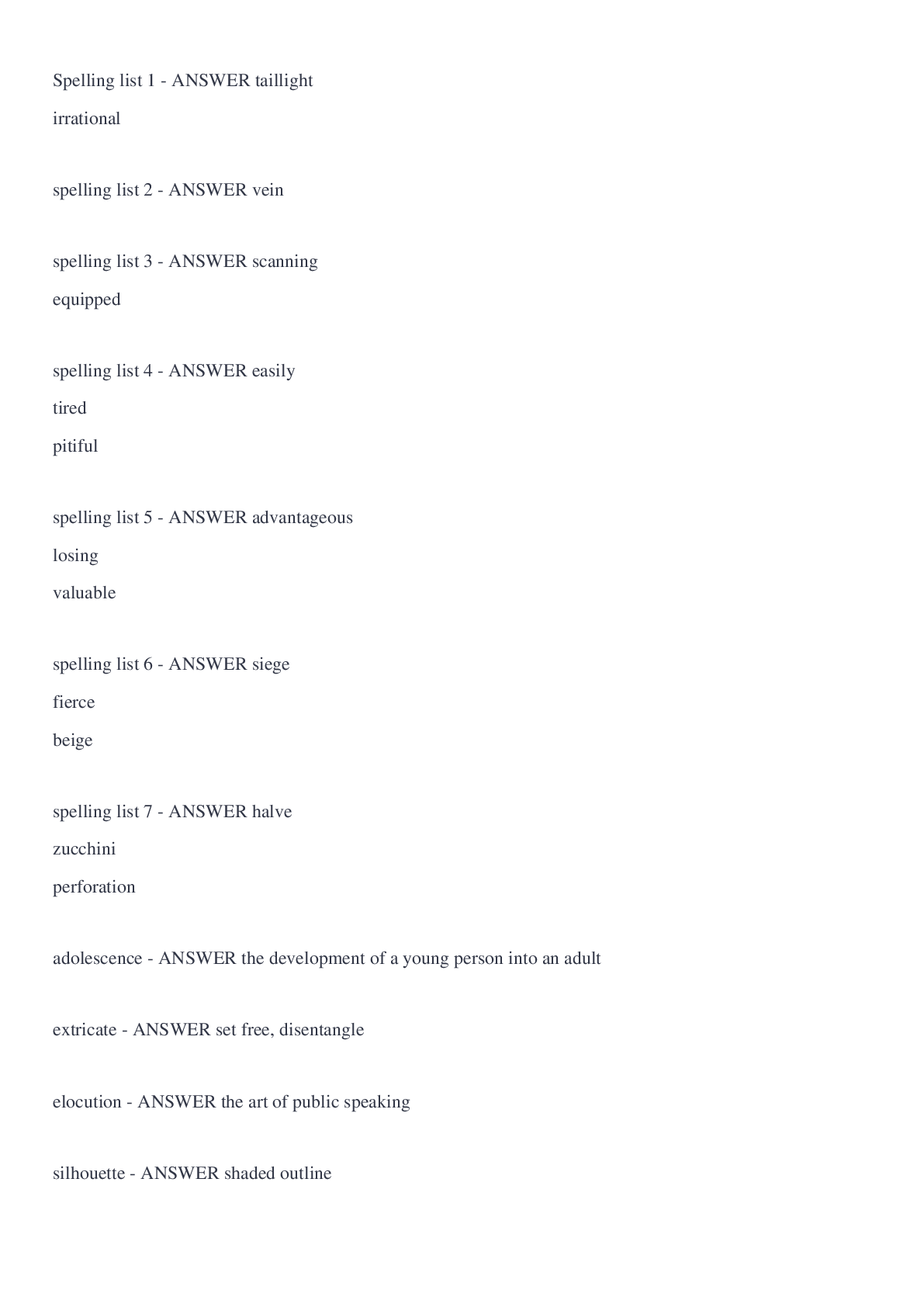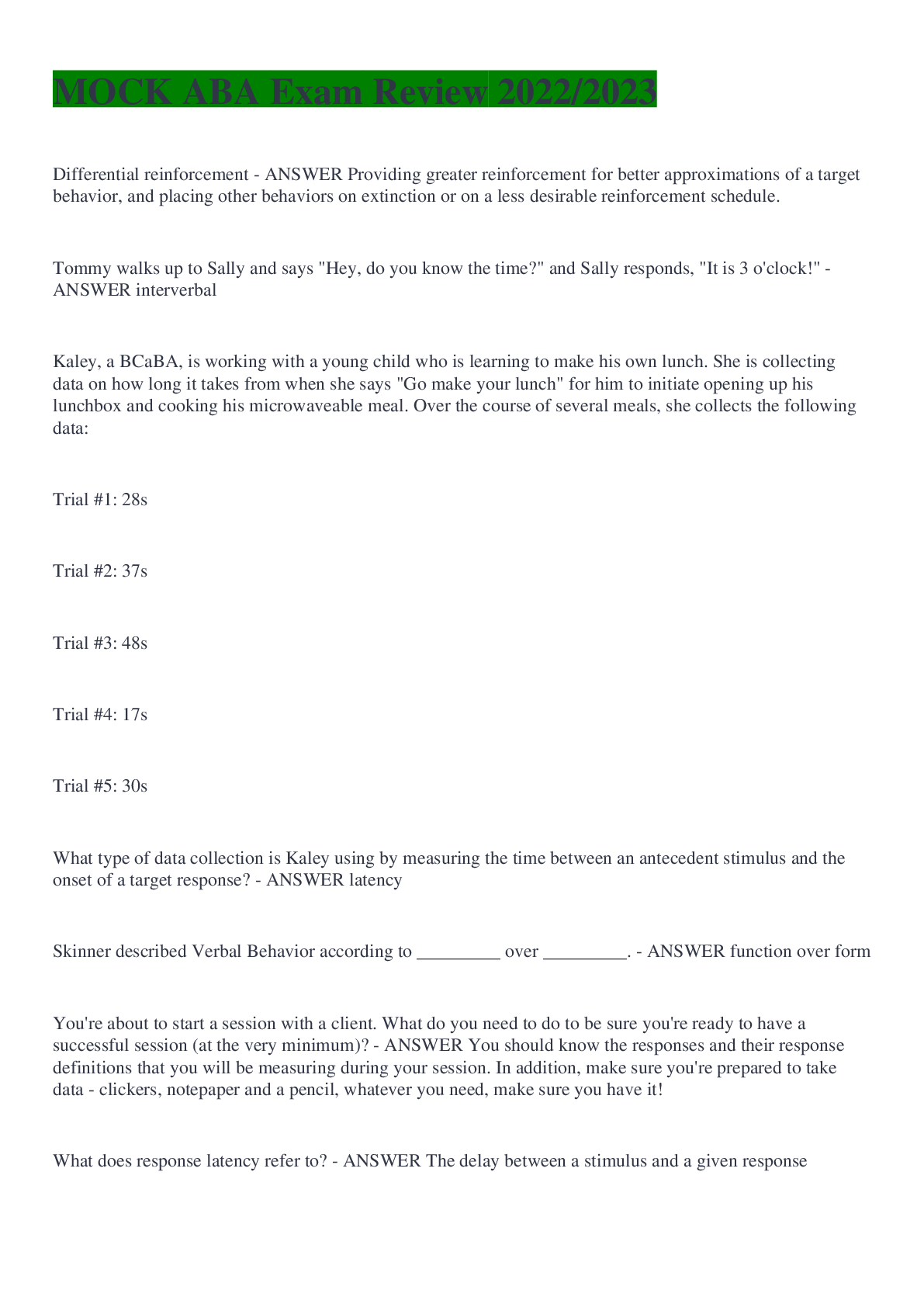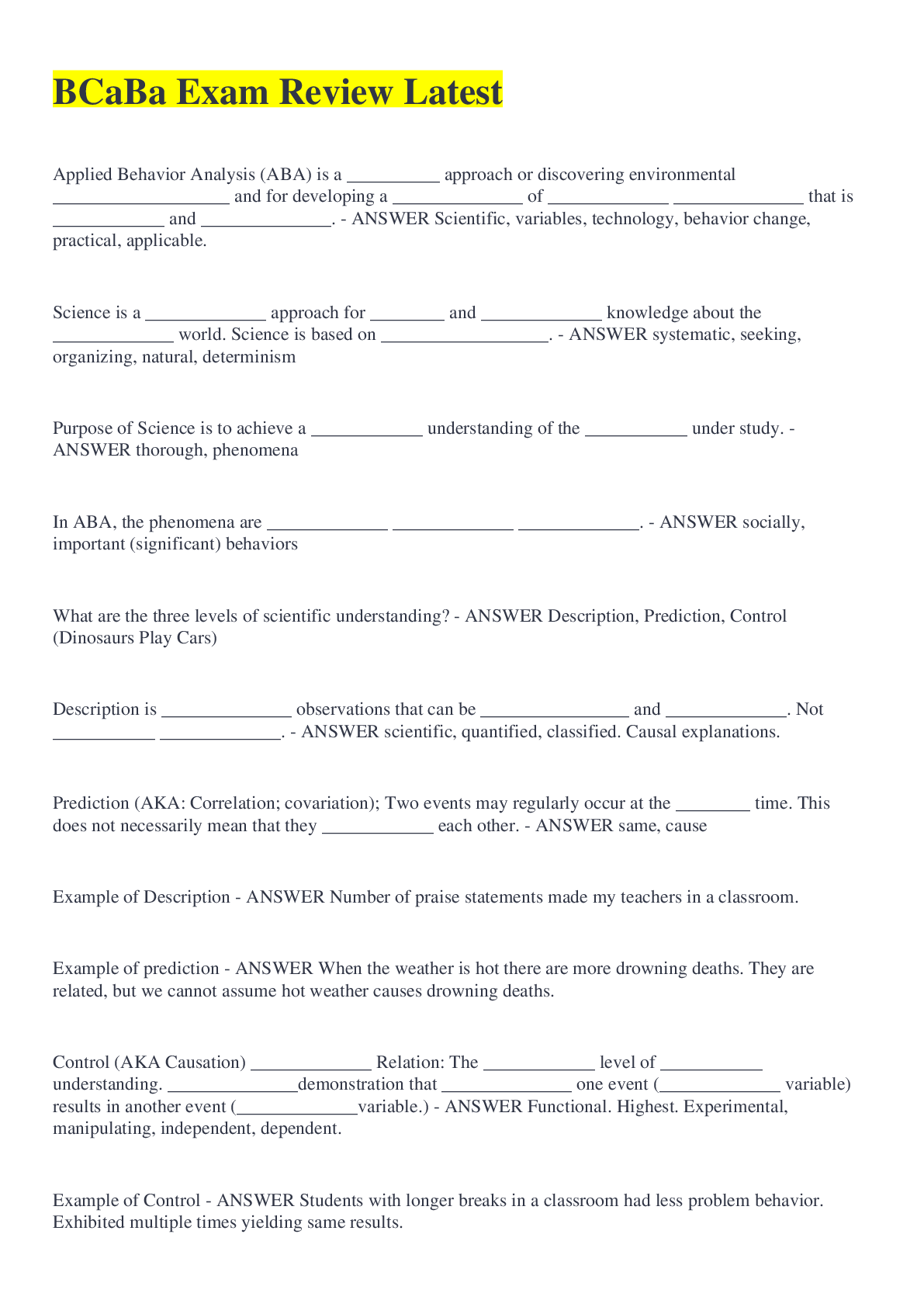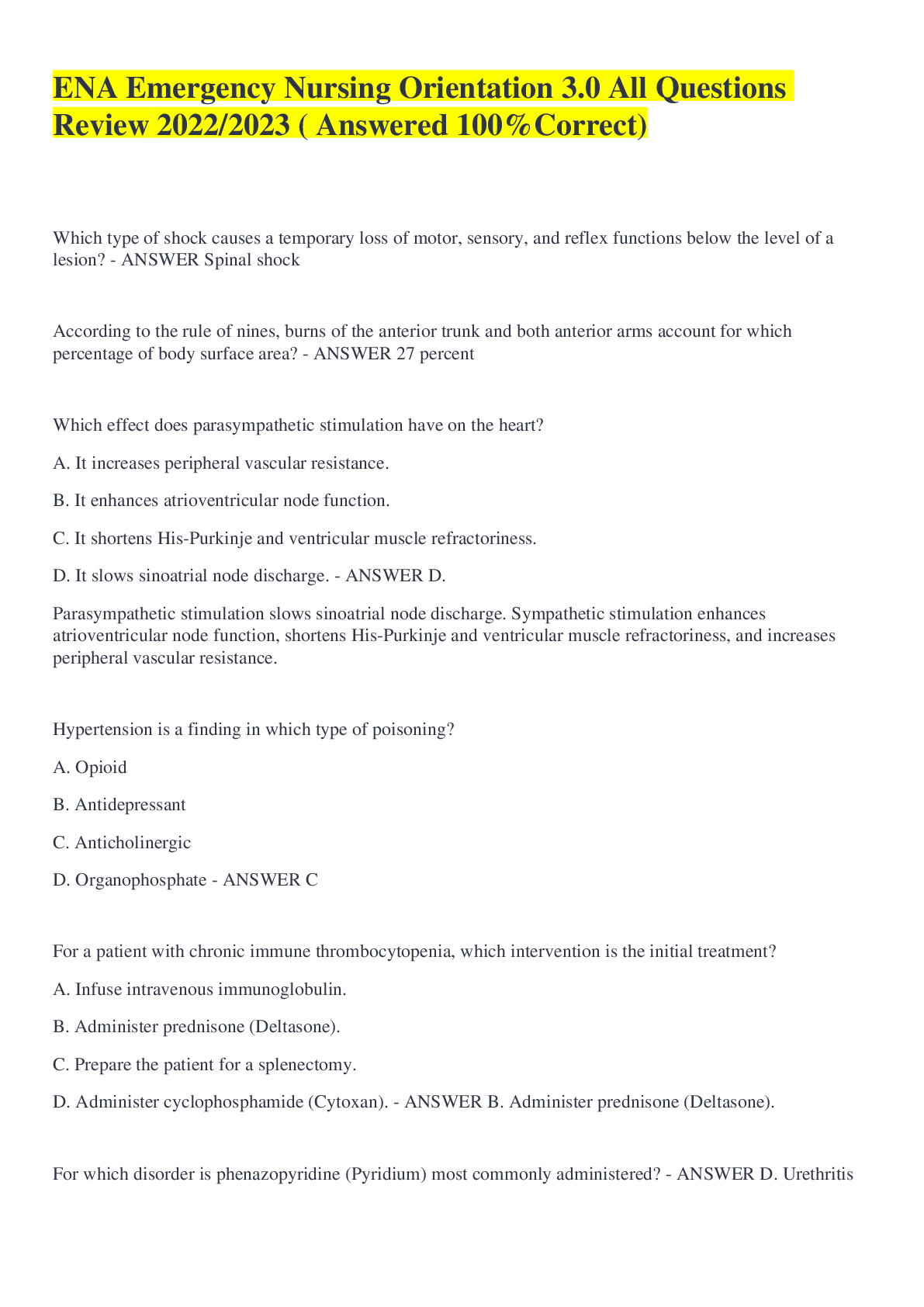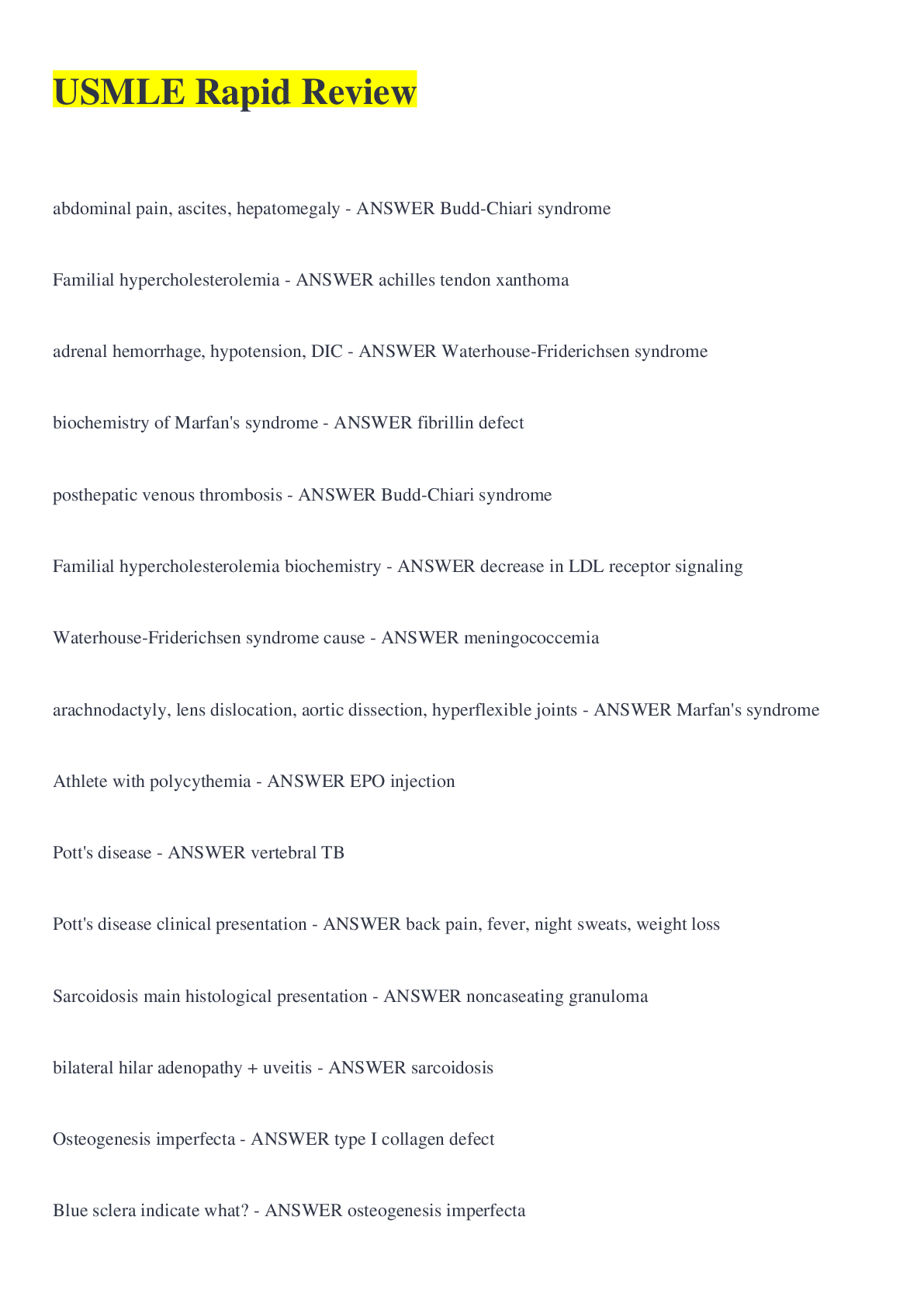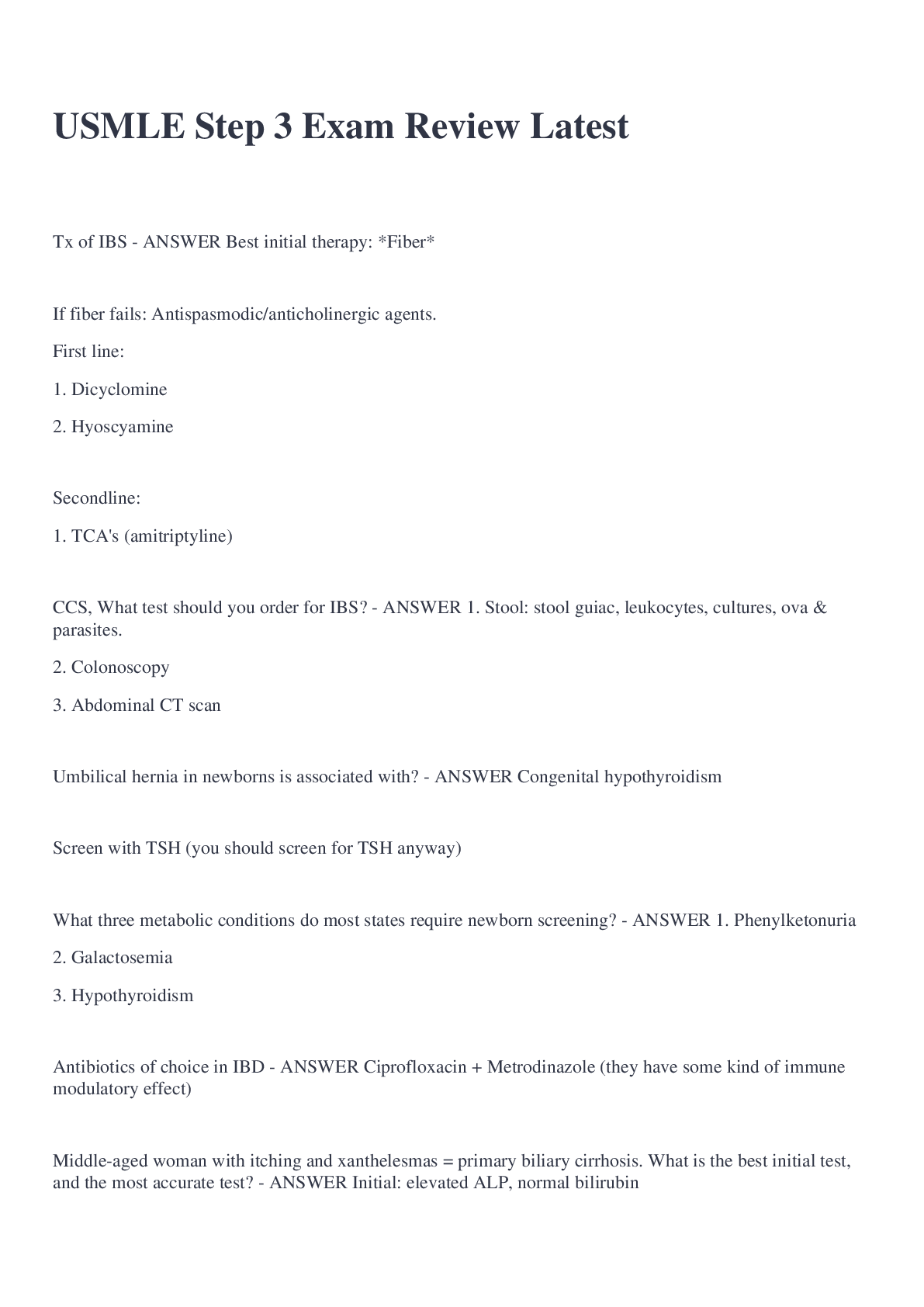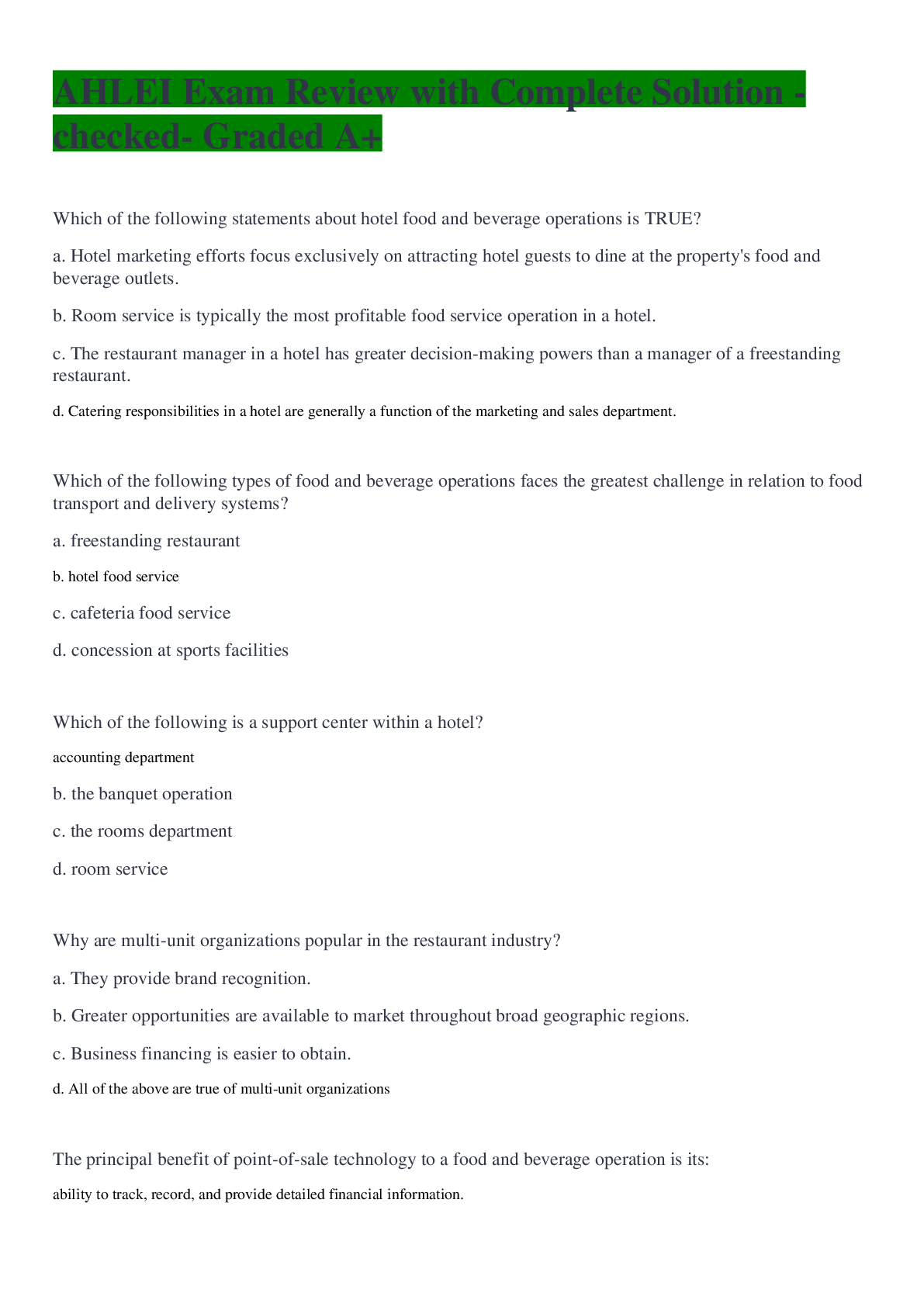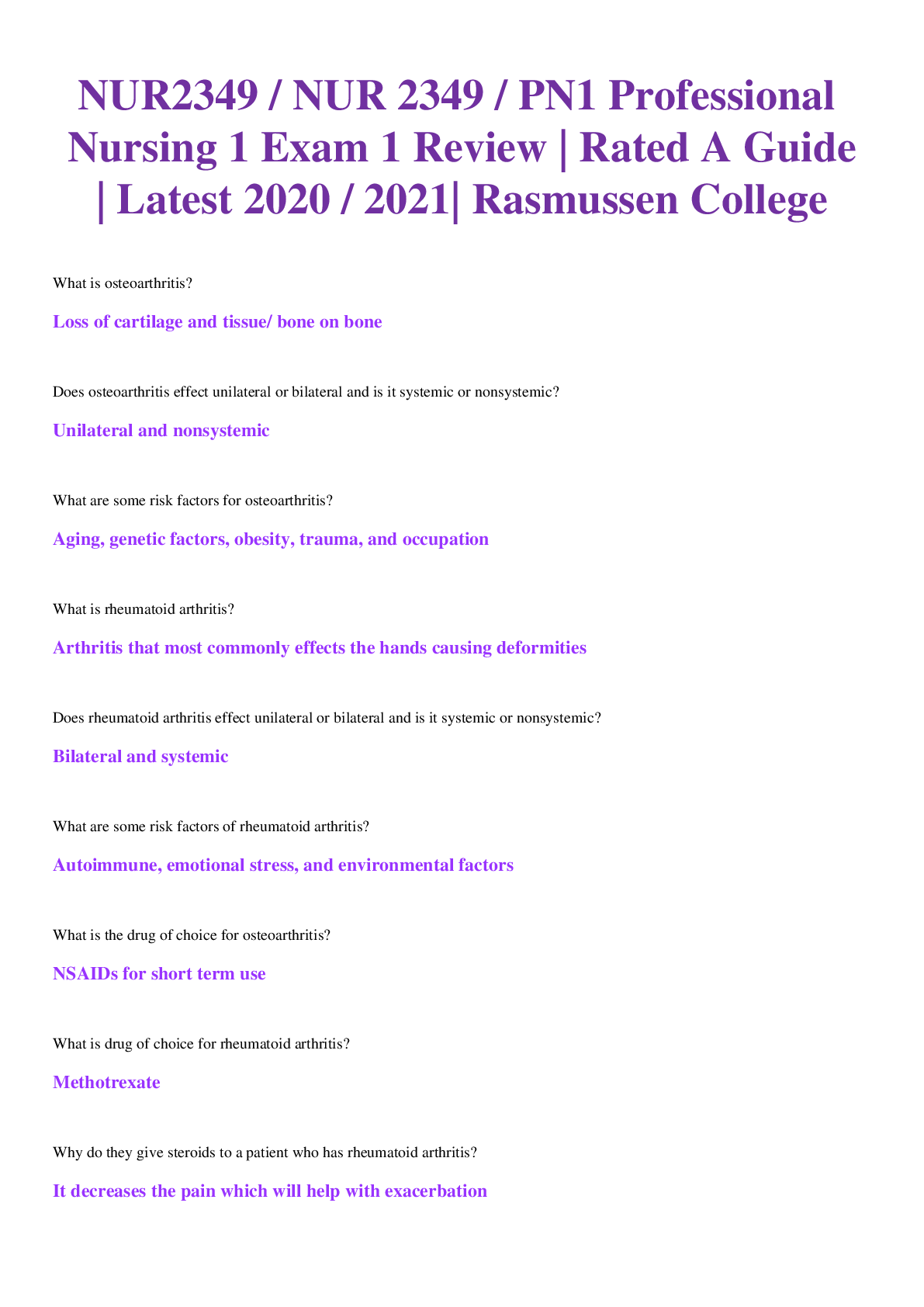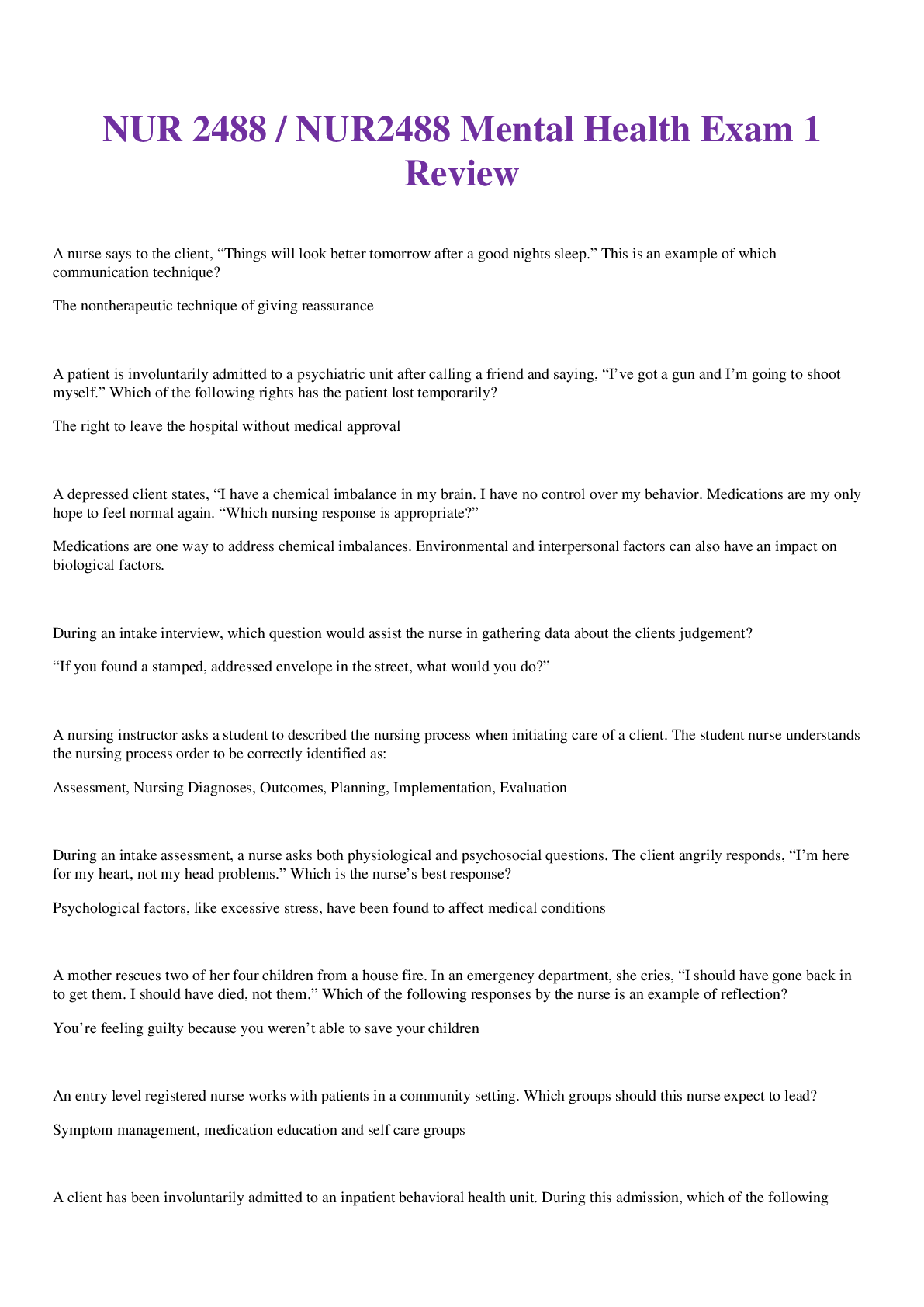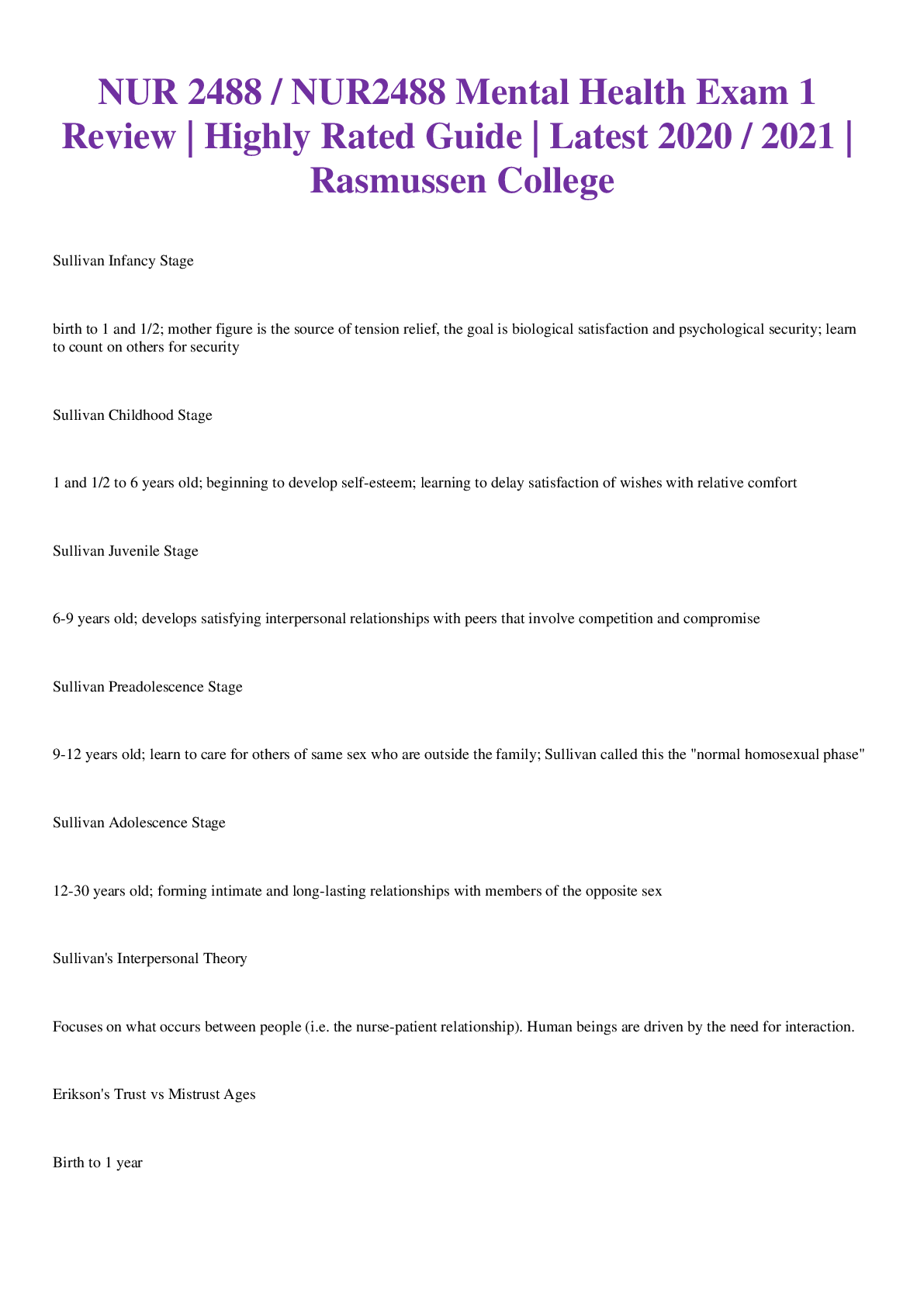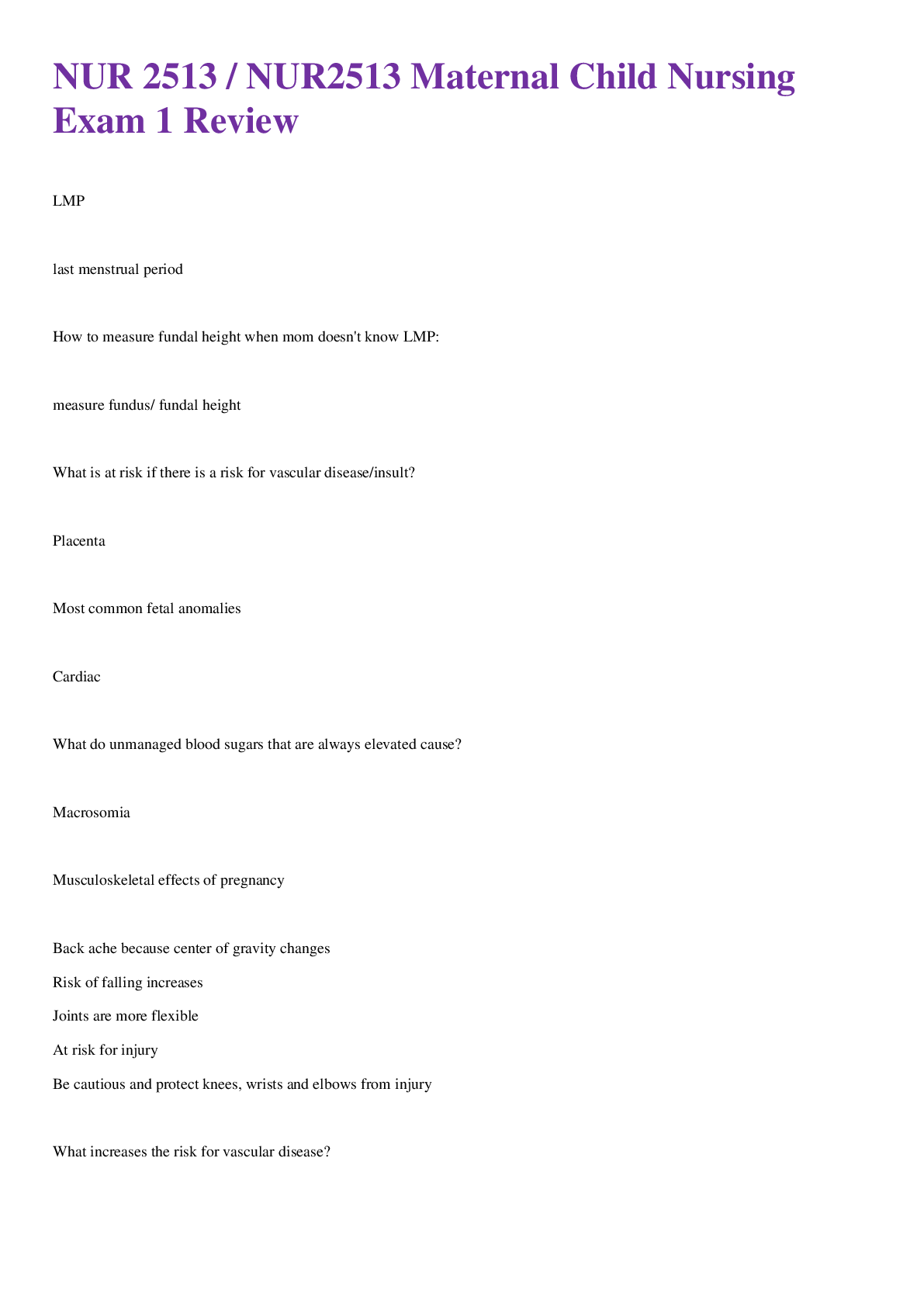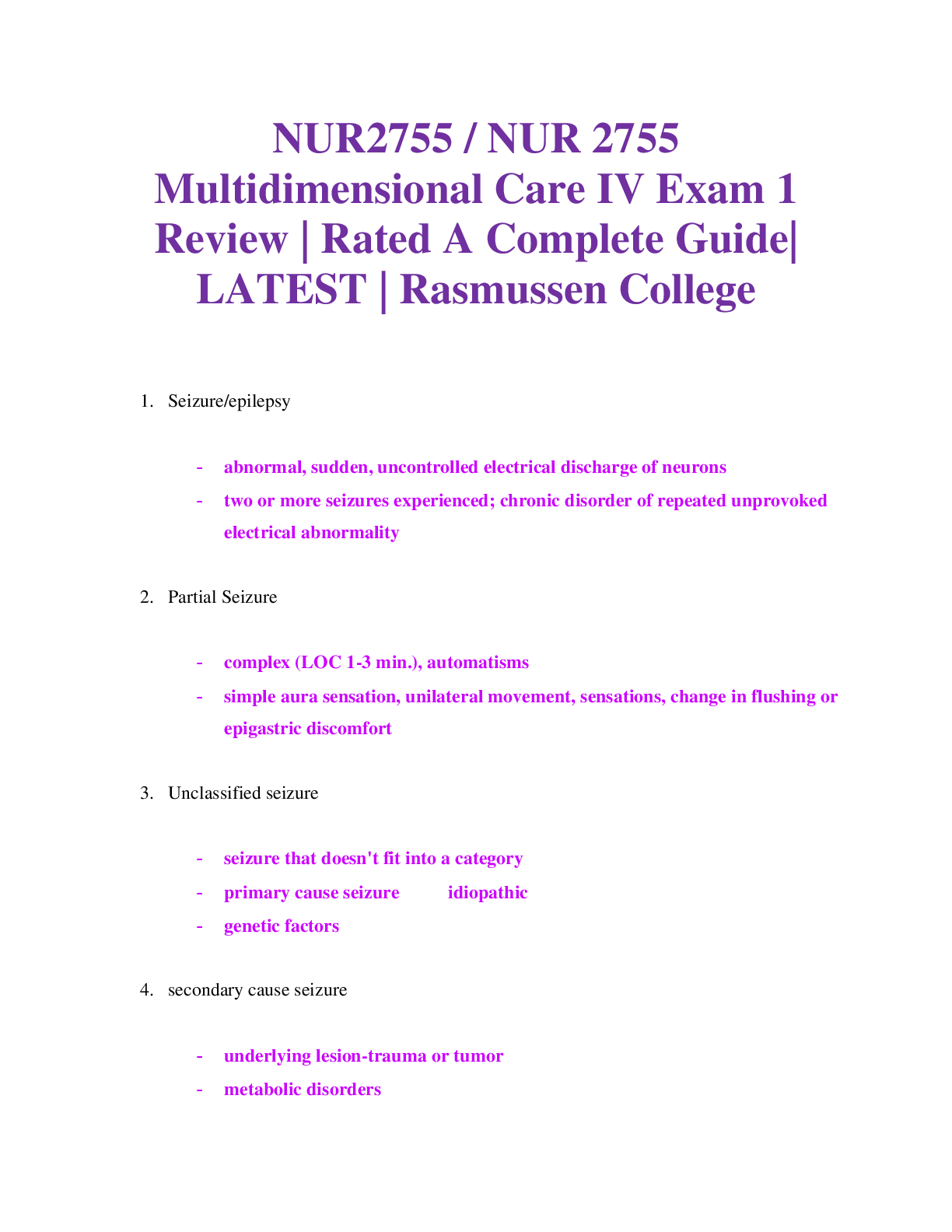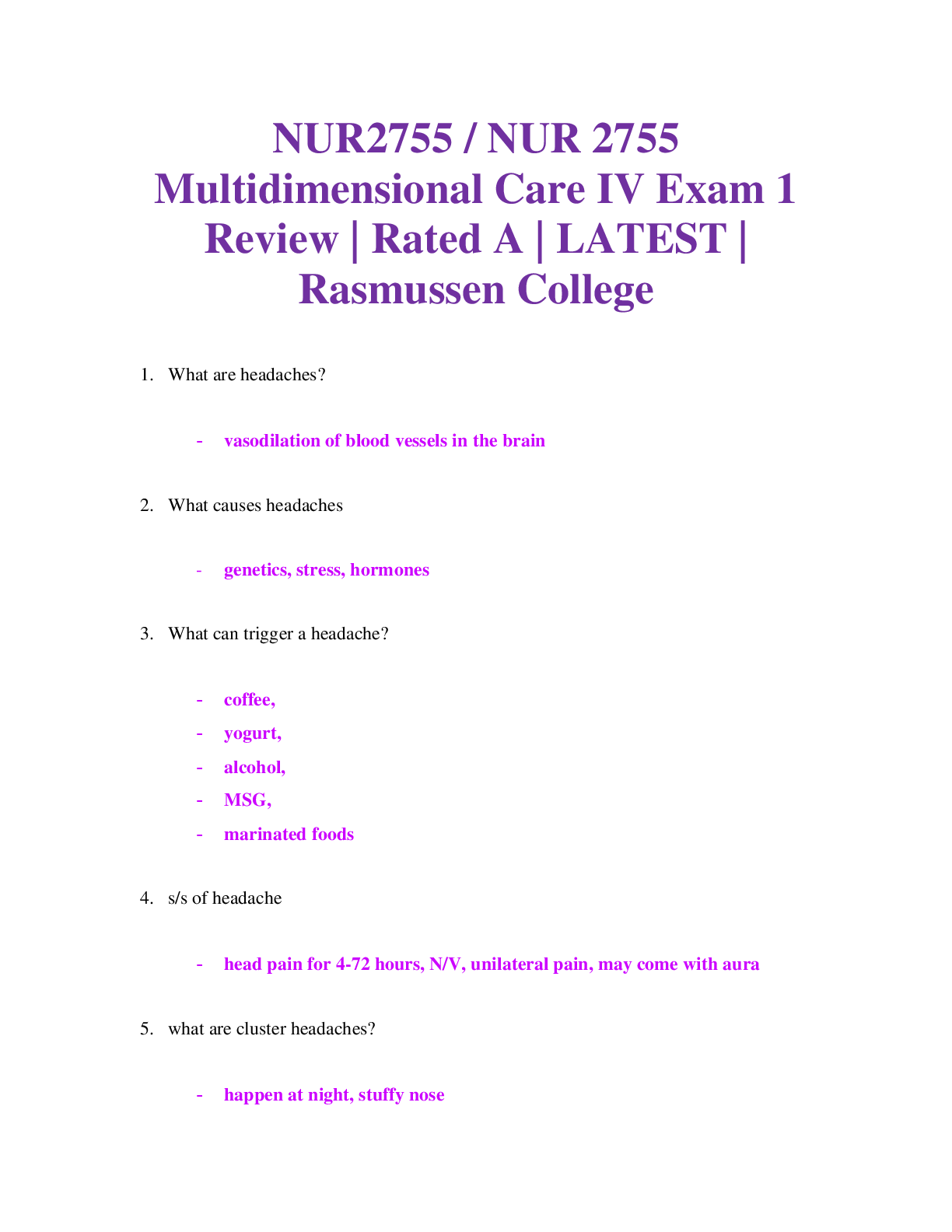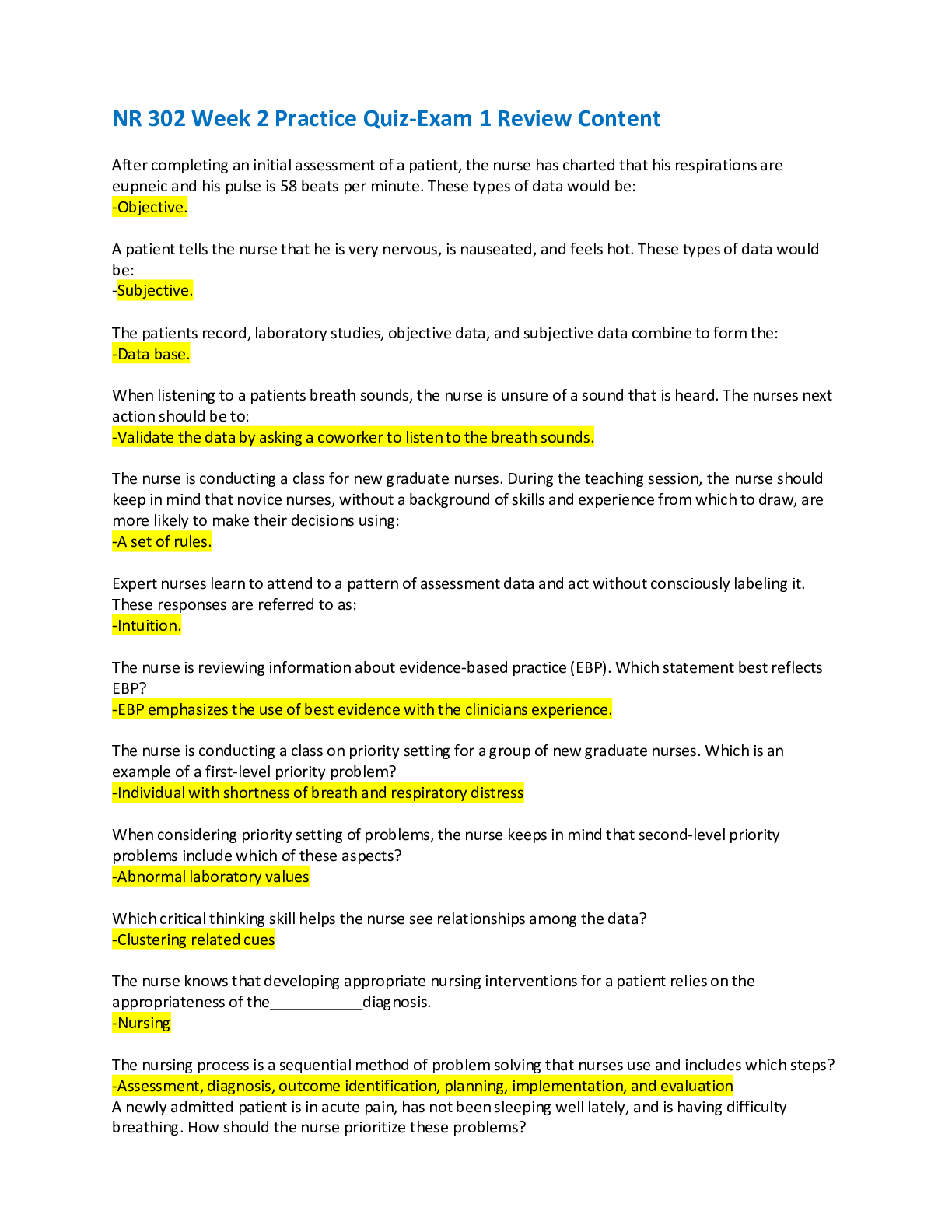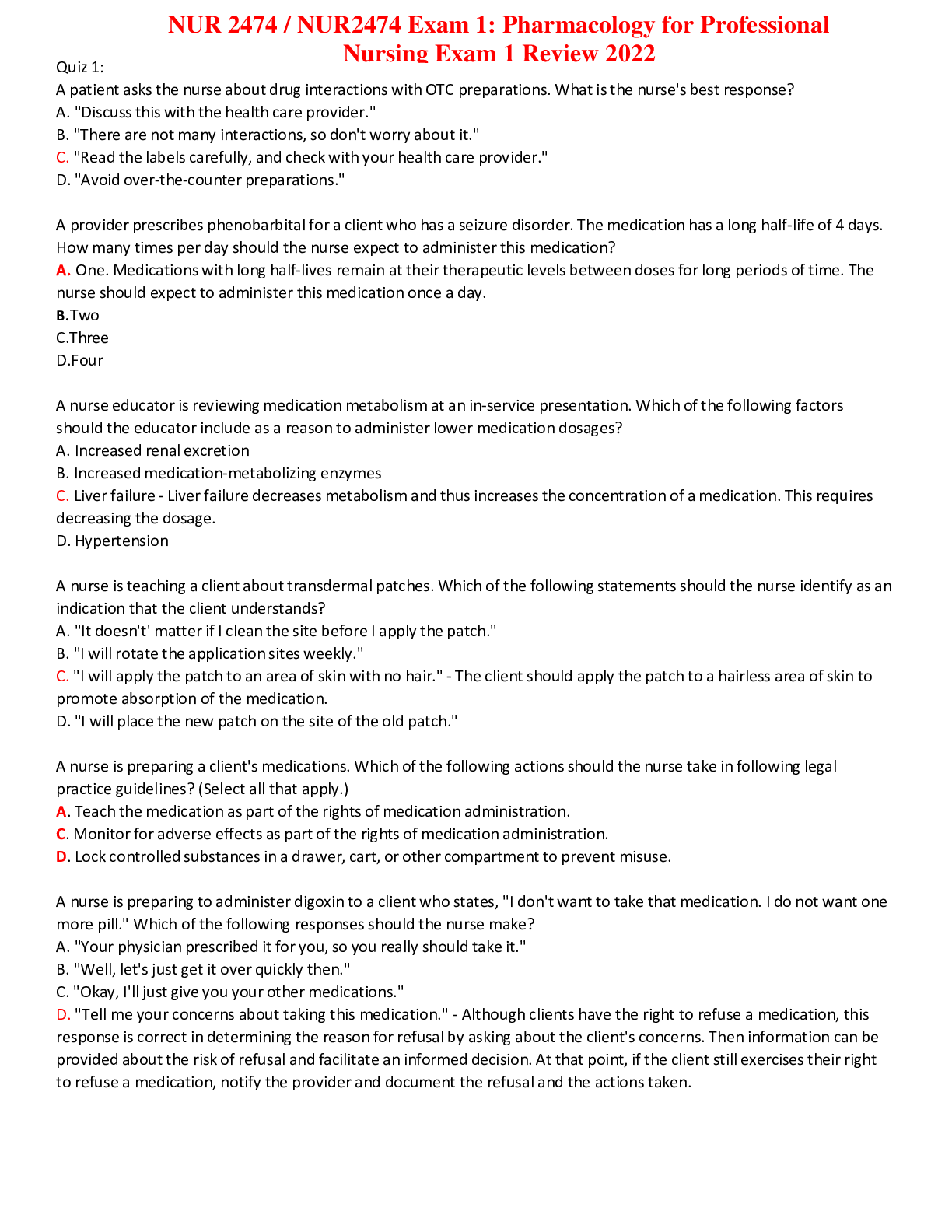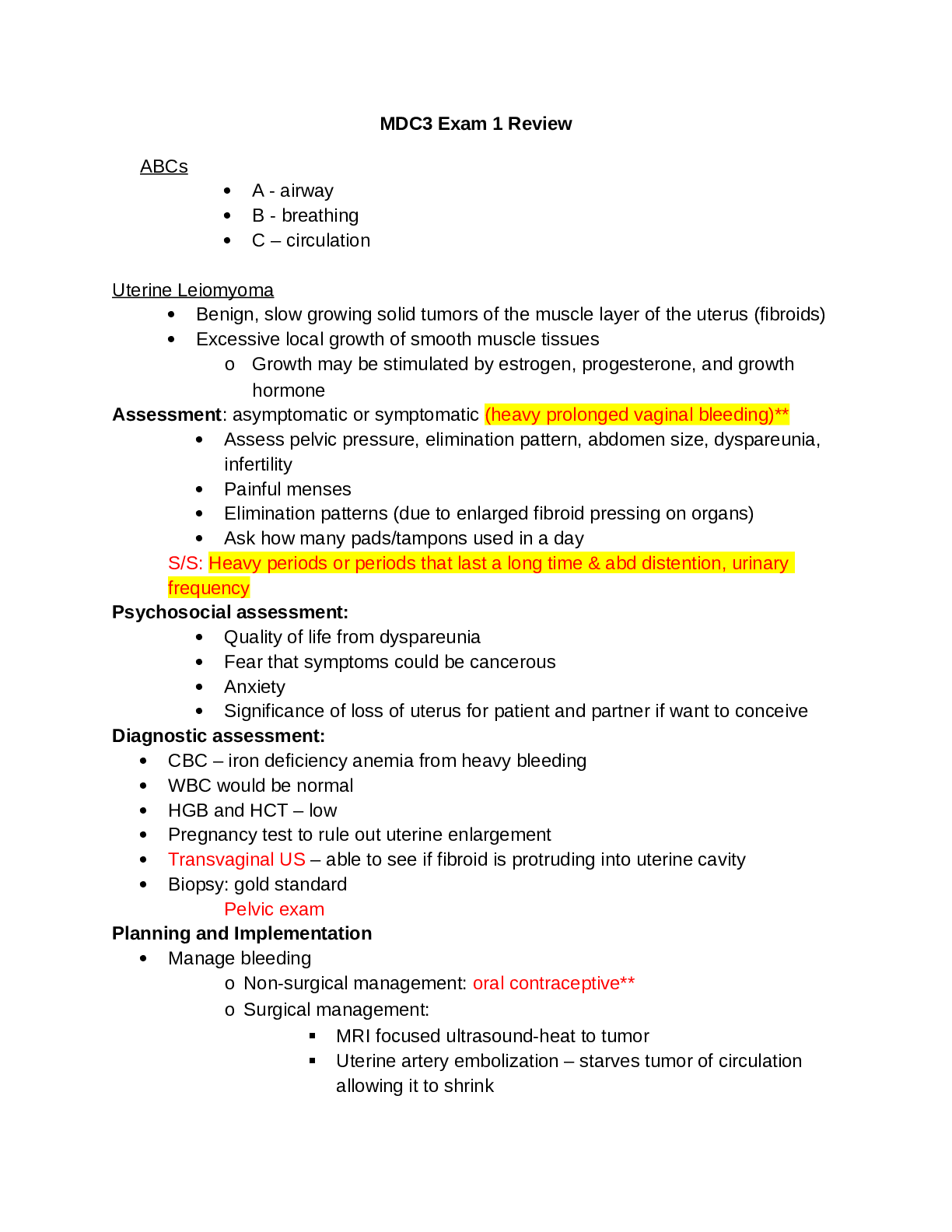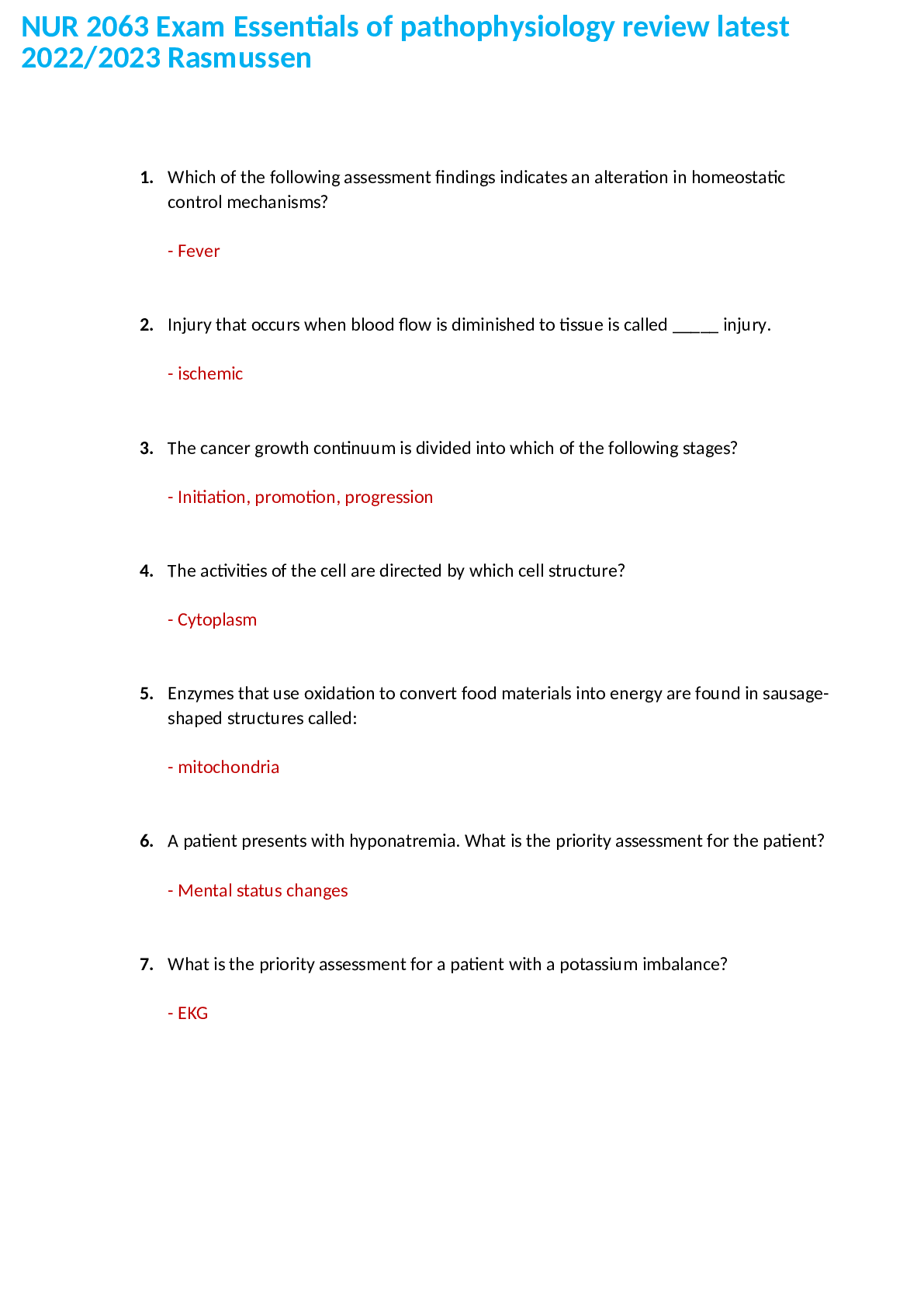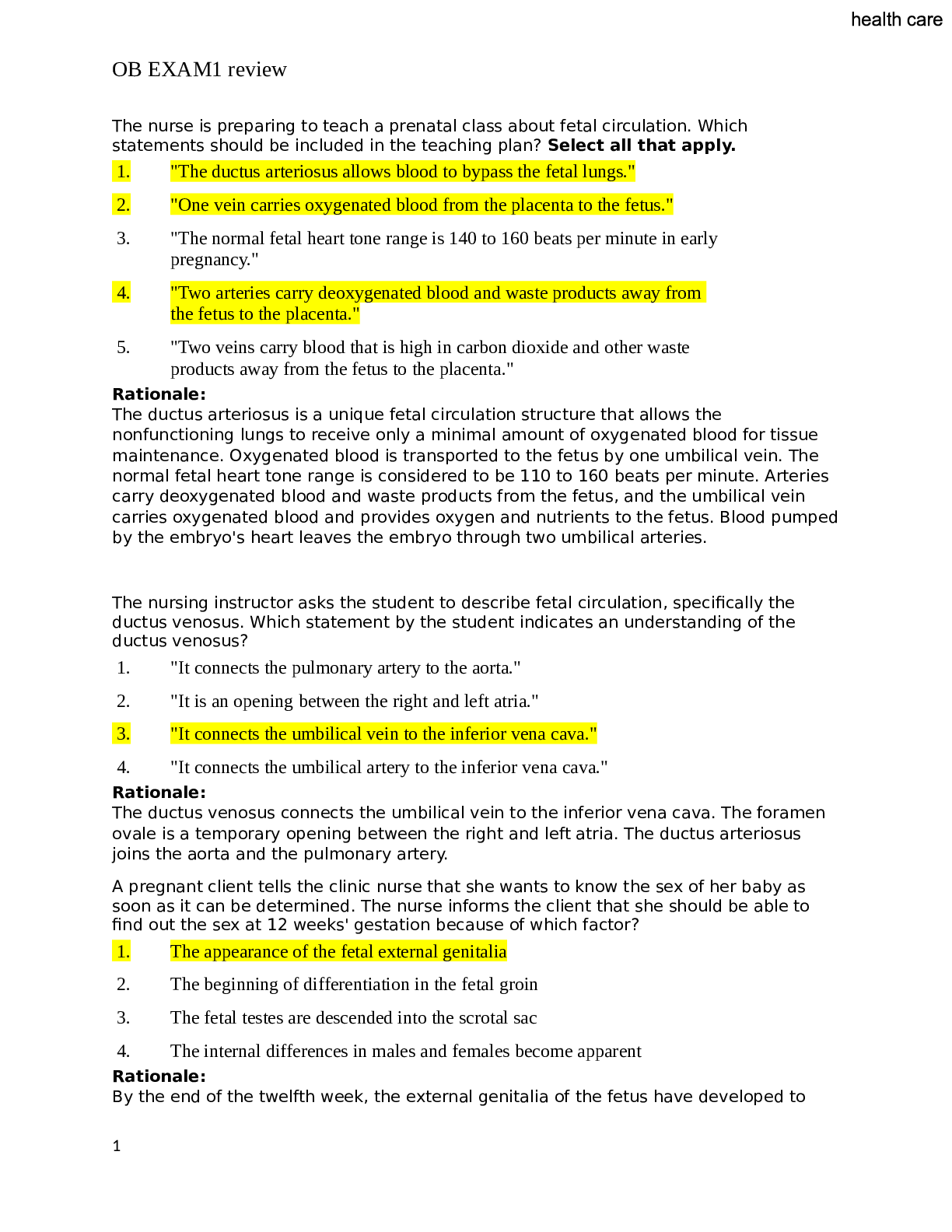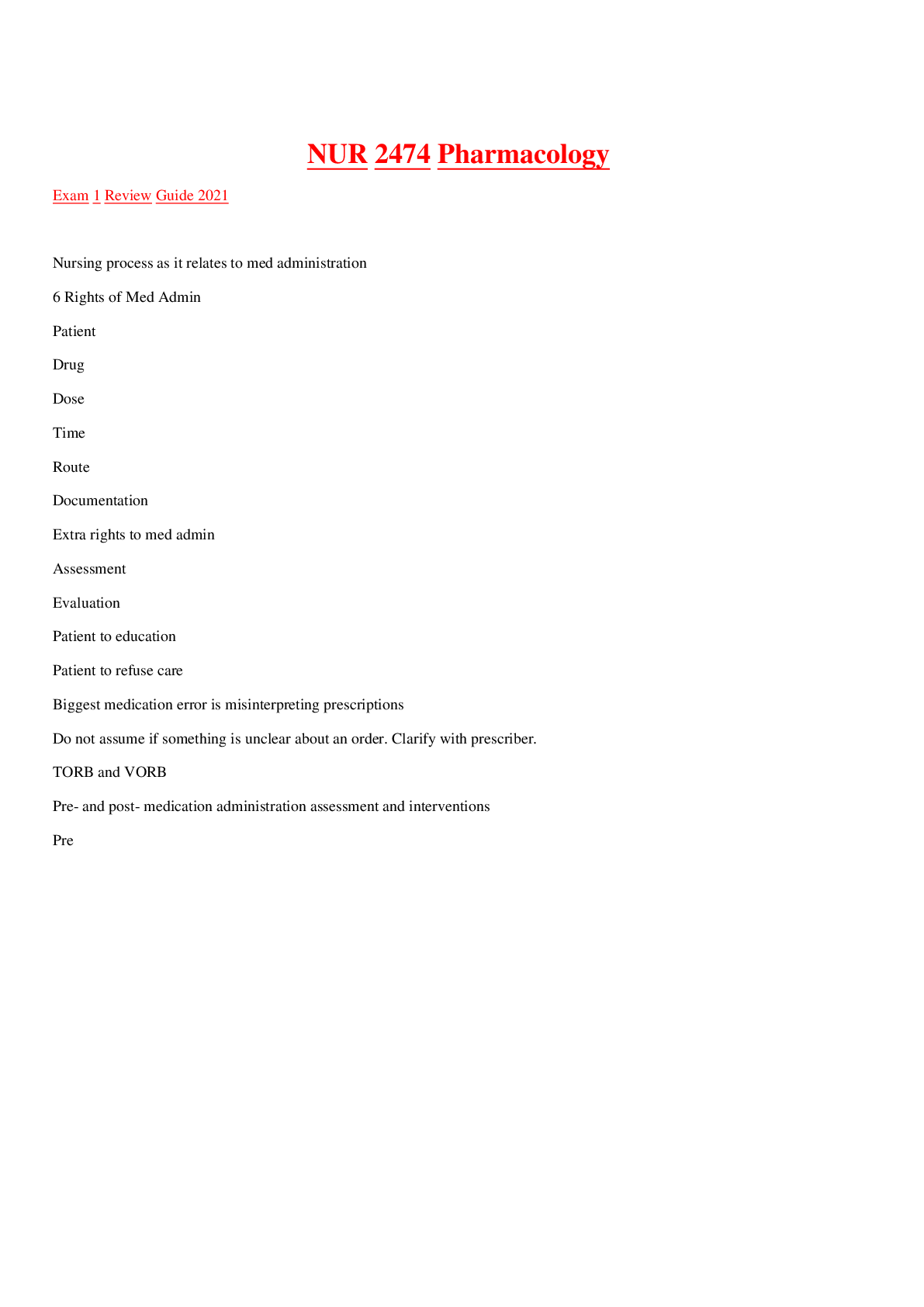Biology > EXAM REVIEW > ENS 304: Exam 1 Review with complete solution Created for 2022 (All)
ENS 304: Exam 1 Review with complete solution Created for 2022
Document Content and Description Below
Explain the difference b/n homeostasis and steady state - ANSWER -homeostasis is when stable equilibrium is maintained by physiological processes -steady state is when all variables are constant in s... pite of ongoing processes that strive to change them. a steady state occurs during moderate to heavy exercise Explain negative feedback - ANSWER -when a reaction causes a decrease in function in response to a stimulus. Describe the difference b/n an absolute and relative expression - ANSWER -an absolute expression is solely based on numbers -a relative expression takes other factors into consideration Identify the primary components of a graph - ANSWER -independent variable: the one that is manipulated/controlled by the investigatory -dependent variable: the one that is measured in response to the independent variable -x axis (horizontal) -y axis (vertical) -linear relationship -curvilinear relationship Discuss the role of sensory feedback to movement - ANSWER -essential for CNS function bc the brain has to know what is going on -used to modify motion using mechanoreceptors/proprioceptors, metaborecptors, and nociceptors Contrast differences in control of muscle reflexes, rhythmic movement, and voluntary movement - ANSWER -muscle reflexes don't require the brain bc they're quick responses to external stimuli -the central pattern generator maintains rhythmic movement without input from the brain -the brain controls voluntary movement with three stages, planning ("rough draft" of movement plan developed), initiating (early draft of movement plan modified), and executing (motor signals sent to muscles) Describe the central nervous process that leads to voluntary movement - ANSWER -the brain controls voluntary movement with three stages, planning ("rough draft" of movement plan developed), initiating (early draft of movement plan modified), and executing (motor signals sent to muscles) Describe the RMP of a plasma membrane and provide an explanation for the potential - ANSWER -the RMP for a plasma membrane is -70 mv and is the result of K+ leakiness bc intracellular proteins (Na+/K+ ATPase) pumping two in and 3 out Describe an AP and provide an explanation for the changes in the membrane potential - ANSWER -an AP is an "all or nothing" potential that remains at the same intensity the entire time and cannot go backwards -RMP (-70 mv) -threshold -depolarization -peak (+20 mv) -repolarization -hyperpolarization -back to RMP (-70 mv) Explain how a motor neuron communicates with a muscle fiber - ANSWER -AP's are sent down the motor neuron to synapse with the muscle fiber Describe the blood-gas barrier and the magnitude of the gas exchange area in the lungs - ANSWER -in healthy lungs the blood-gas barrier is extremely thin allowing for fast and easy gas exchange -the lungs have a huge surface area and an extensive blood supply ensuring that all the O2 that our bodies need can diffuse into our blood at very high rates Explain the movement of air into and out of the lungs during inspiration and expiration - ANSWER -air moves into and out of the lungs due to pressure gradients (air moves from high to low pressure) -as we breath air in (inspiration) the volume increases so when we breath air out (expiration) the volume decreases (during exercise the internal intercostal and abdominal muscles have to contract in order to help return the chest/push the diaphragm up) Explain why alveolar ventilation is a better measure of the air that participates in gas exchange than minute ventilation - ANSWER -alveolar ventilation is a better measure of gas exchange bc the last part of the breath ("dead space") never gets down to the alveoli therefore never participating in gas exchange -alveolar ventilation subtracts out the "dead space" where as minute ventilation includes it Compare how minute ventilation during moderate intensity exercise is increased with the increase at maximal intensity - ANSWER -minute ventilation increases with exercise by increasing respiratory rate and tidal volume (moderate intensity exercise increases primarily through tidal volume where as high intensity exercise increases primarily through respiratory rate) minute ventilation = tidal volume x respiratory rate [Show More]
Last updated: 1 year ago
Preview 1 out of 4 pages
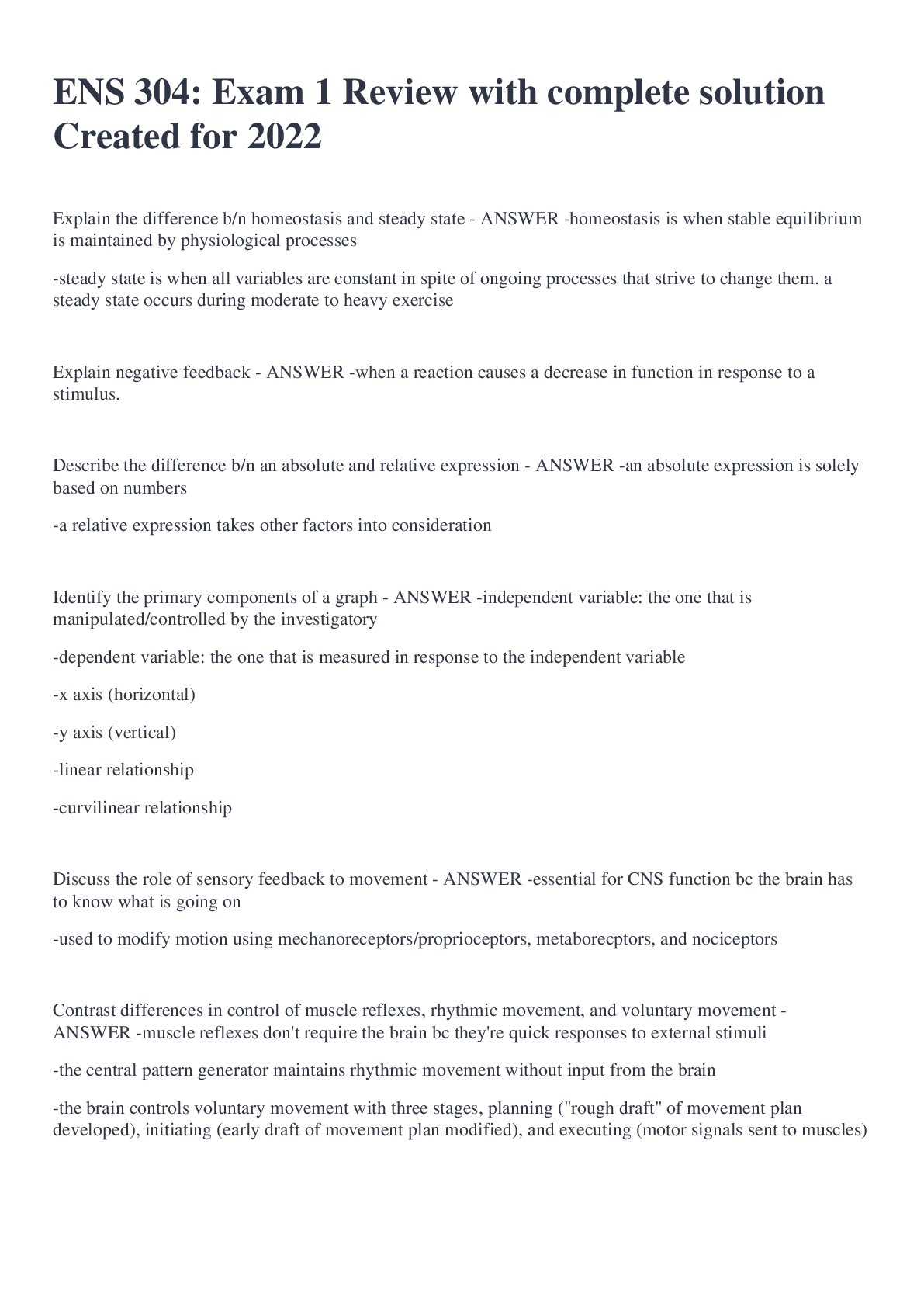
Reviews( 0 )
Document information
Connected school, study & course
About the document
Uploaded On
Oct 03, 2022
Number of pages
4
Written in
Additional information
This document has been written for:
Uploaded
Oct 03, 2022
Downloads
0
Views
52

